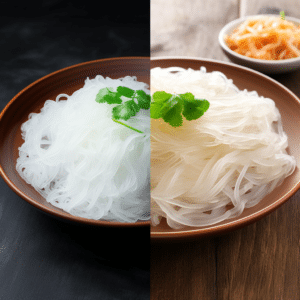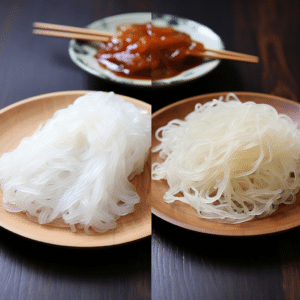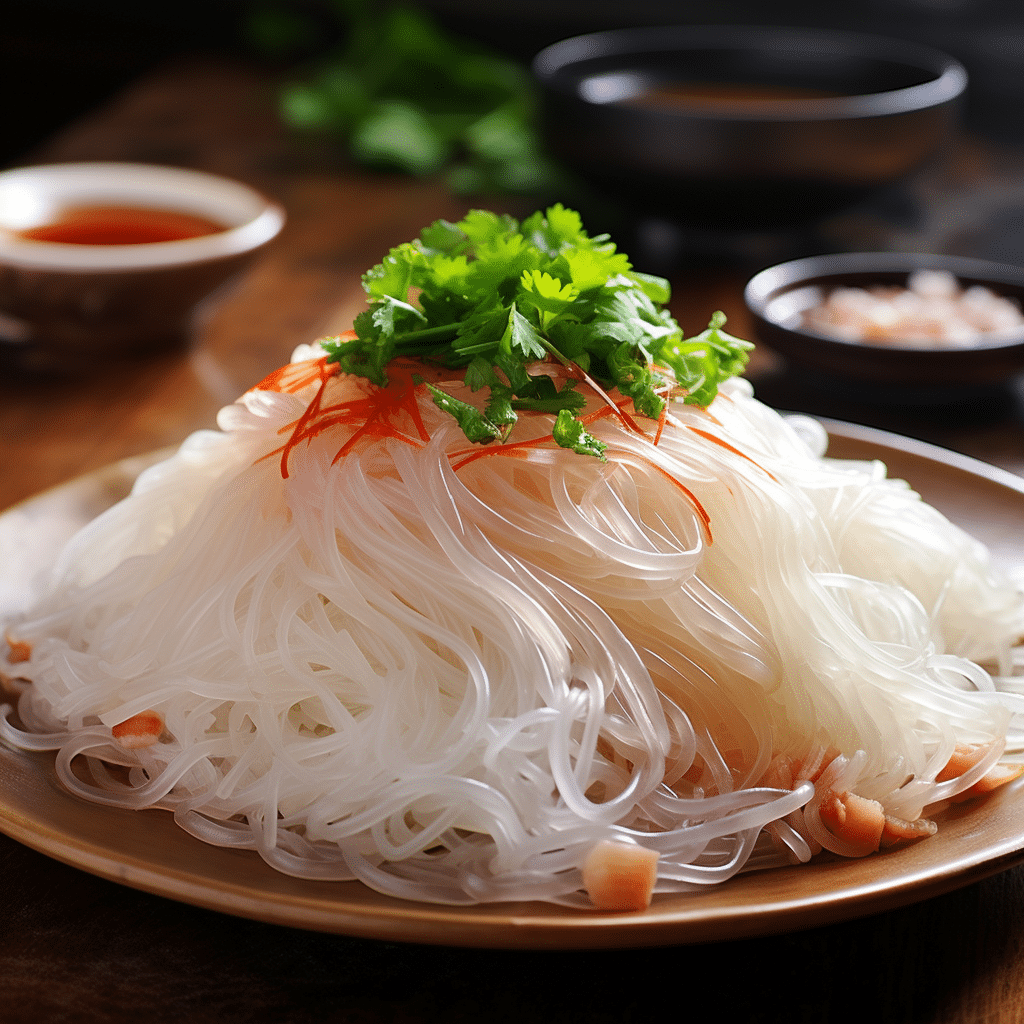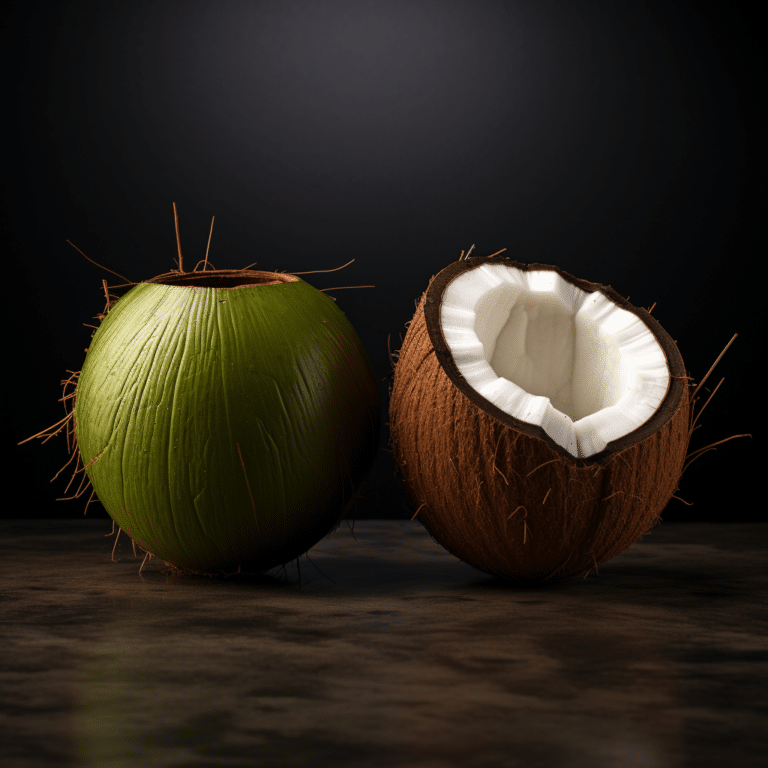Glass Noodles vs Rice Noodles: Similarities and Differences
Noodles are a staple food in Asia. There are wide varieties of noodles other than the typical wheat and rice noodles. Some are made from wheat, rice, potato starch, mung beans, and buckwheat. Ingredient availability, local taste, and regional dishes contribute to the various noodle types you can find today.
Two popular noodles are glass noodles and rice noodles. These noodles appear as long and thin strands like flat sheets or spaghetti. And telling the difference between them can be challenging. This article discusses glass noodles vs. rice, what they are, their similarities, and their differences.

Glass Noodles vs Rice Noodles: Overview
About Glass Noodles
Very popular in Korean cuisine, glass noodles are grayish-green when raw and become translucent when cooked. They can be made from sweet potatoes, mung beans, or tapioca. Once made, glass noodles are molded into various shapes, ranging from thin, long strand noodles to flat sheets, among other shapes. Its Glass noodles, also known as cellphone noodles, are mainly sold dried and are used in a different types of dishes.
Glass Noodles Nutrition Information
The Glass noodles are packed with carbohydrates, which primarily comprise starch. These noodles have very little protein and fats.
They also contain vitamins and minerals, like selenium, iron, niacin, and calcium. Since glass noodles are made from mung bean starch, sweet potato starch, and tapioca, not wheat, they don’t contain gluten.
Uses Of Glass Noodles In Culinary
Glass noodles can be prepared in various dishes. For instance, soups, stir fries, salads, deep fried, or as a dish of their own. Cooking glass noodles is pretty straightforward. Start by soaking them in clean, cold water to reconstitute them. Then proceed to cook them per your preferred method.
When cooked, these noodles have a bland taste with a slight chewiness, making them perfect for stir frying, especially if the meal has larger chunks of other ingredients. Since these noodles have a bland taste, they rely on other ingredients that they are cooked with to give the dish taste. This means cooking glass noodles on their own would result in a dish with no flavor or aroma.
About Rice Noodles
As the name suggests, rice noodles are made from white rice flour and can be fresh or dried. Like pasta, these noodles are available in various shapes. They can be shaped into long, thin strands of rice noodles, resembling spaghetti. Or they can be made flat like fettucini. This type is called vermicelli.
Rice noodles are white, both when raw or cooked. However, when cornstarch or tapioca is added, they become more transparent and have a more chewy texture.
Rice Noodles Nutrition Information
Like glass noodles, rice noodles are high in carbohydrates, primarily starch. They also contain small amounts of proteins and fats.
However, rice noodles have negligible amounts of vitamins and minerals. Fortification with minerals and vitamins is an excellent way of adding vitamins and minerals to rice noodles.
Since rice noodles come from white rice flour and not wheat, they are gluten-free and can be eaten even by those having gluten sensitivity.
Use Of Rice Noodles In Culinary
There are many ways of preparing rice noodles. You may soak these noodles in boiling water to soften them or cook them directly in boiling water like pasta. Rice noodles can be deep fried, stir-fried, or added to salads and soups. You can also use rice noodles in different sauces and condiments.
Similarities Between Glass Noddles And Rice Noodles
Nutrition Information
Starch-containing noodles – both glass noodles and rice noodles come from carbohydrate-rich sources. So, they’re primarily complex carbohydrates, comprising mainly starch.
Gluten-free – glass noodles come from tapioca, mung bean, and sweet potato starch; rice noodles come from white rice flour. Since the two don’t come from wheat, they are gluten-free and perfect for those sensitive to wheat.
Cooking Methods
Glass and rice noodles have a lot in common, including how they’re prepared. They can be deep fried, stir-fried, or added to salads, soups, condiments, and sauces. They are interchangeable, and you can use rice noodles in recipes that call for glass noodles and vice versa.
Differences Between Glass Noodles And Rice Noodles
The first and most notable difference is that rice noodles come from white rice flour, while glass noodles come from mung bean starch, potato starch, or tapioca. Other differences include:
Appearance When Raw
Glass noodles are grayish-green in color, which most likely comes from the sweet potato used to make them that usually turn gray from white when cooked.
On the other hand, rice noodles are white in color with a translucent feature in them. They look like bigas or the usual white rice but in noodle form.
Appearance When Cooked
Both glass and rice noodles need to be softened in a liquid before they can be cooked. And depending on the nature of the soaking liquid, it can either change the color of the noodles or not.
Using dark ingredients for soaking like oyster or soy sauce, reddish-colored condiments like ketchup and hot sauces can change noodles’ color. Simmer the noodles in a clear liquid to get the authentic noodle color.
When cooked in a clear liquid, glass noodles appear gray-green, while rice noodles appear white to almost translucent.
Nutrition Information
Rice noodles have some little amounts of proteins and fats, whereas glass noodles are mainly starch with no protein or fats.
Glass noodles contain some vitamins and minerals. On the other hand, rice noodles do not have minerals and vitamins.
Texture
Another difference between the two noodles is their texture. Glass noodles are springy, have a bland taste, and have a slight chewiness, making them ideal for stir frying.
Rice noodles are tastier, softer, and break easily
Availability
Rice noodles are known in many different countries and, therefore, are available in many countries. Glass noodles are primarily famous in Korea. As such, they are not readily available in other countries.

Conclusion
Glass noodles and rice noodles are popular noodle types in Asian cuisine. The former is gray-green and translucent, while the latter is white and transparent. They come from different flours and don’t appear the same. However, they also have a lot in common and be used interchangeably in recipes.






